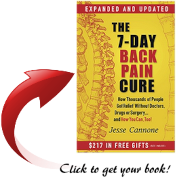Muscle imbalance refers to an unequal distribution of muscle strength or flexibility between opposing muscle groups around a joint. This imbalance can occur for various reasons, such as poor posture, improper training techniques, overuse of certain muscles, or injury. It is important to note that I am not a medical or healthcare professional and what follows is not medical advice. However, it is well-known that when there is a significant muscle imbalance, it can lead to pain, discomfort, and an increased risk of injuries.

Image by wayhomestudio on Freepik
Here is an overview of how muscle imbalances can impact pain and some general strategies that individuals might consider to address them:
Effects of Muscle Imbalance on Pain:
- Muscle Strain: Imbalances can cause certain muscles to work harder than others, leading to strain and potential injury.
- Joint Stress: Uneven forces on joints can result in wear and tear, leading to conditions like osteoarthritis.
- Poor Posture: Muscle imbalances can contribute to poor posture, causing chronic pain in the neck, back, and shoulders.
- Limited Range of Motion: Imbalances might restrict your joint movements, leading to pain and reduced mobility.
How to Fix Muscle Imbalances:
- Identify Imbalances: Work with a physical therapist or a qualified trainer to identify muscle imbalances through assessments. They can pinpoint weak and tight muscles.
- Balanced Exercise Routine: Design a workout routine that targets both the main muscles you are focusing on and their opposite muscles, for example biceps and triceps. Include strength training, flexibility exercises, and cardiovascular workouts.
- Corrective Exercises: Perform exercises that specifically target weak muscles. This might involve resistance training, bodyweight exercises, or stability ball exercises.
- Stretching: Incorporate regular stretching, focusing on muscles that are tight. Yoga and Pilates can be excellent for improving flexibility and balance.
- Proper Form: Pay close attention to your form during exercises. Incorrect form can intensify muscle imbalances and lead to injuries.
- Rest and Recovery: Give your body adequate rest to recover. Muscles need time to repair and grow stronger after workouts.
- Massage and Foam Rolling: Massage therapy and foam rolling can help release tension in tight muscles and improve blood circulation, aiding in recovery.
- Professional Help: Consider seeing a physical therapist or a chiropractor. They can provide targeted treatments and exercises tailored to your specific imbalances.
- Balanced Nutrition: Ensure you are getting proper nutrition, including enough protein, vitamins, and minerals, to support muscle health and recovery.
- Patience and Consistency: Correcting muscle imbalances takes time and consistent effort. Be patient and stay committed to your corrective exercises and overall fitness routine.

Remember, it is crucial to consult with a qualified healthcare professional and a certified trainer before starting any new exercise program, especially if you have existing injuries or health conditions. They can provide personalized guidance and advice tailored to address your specific needs and limitations.
To Your Success & Freedom,
Glenn Shimabukuro



